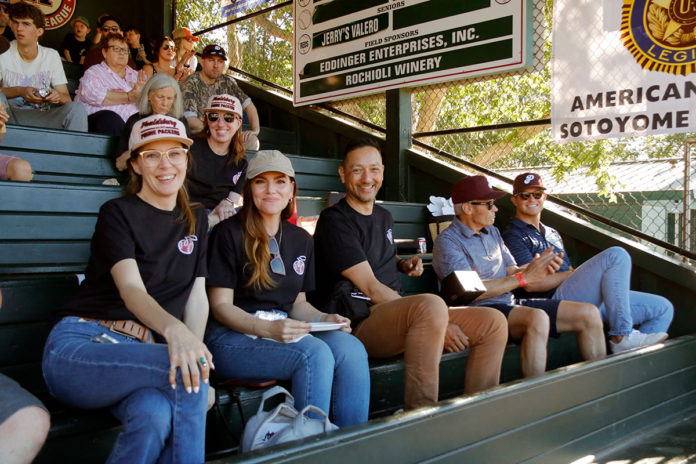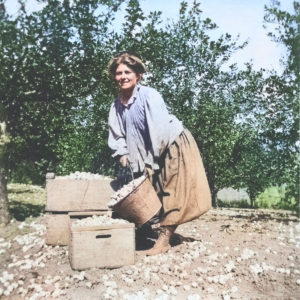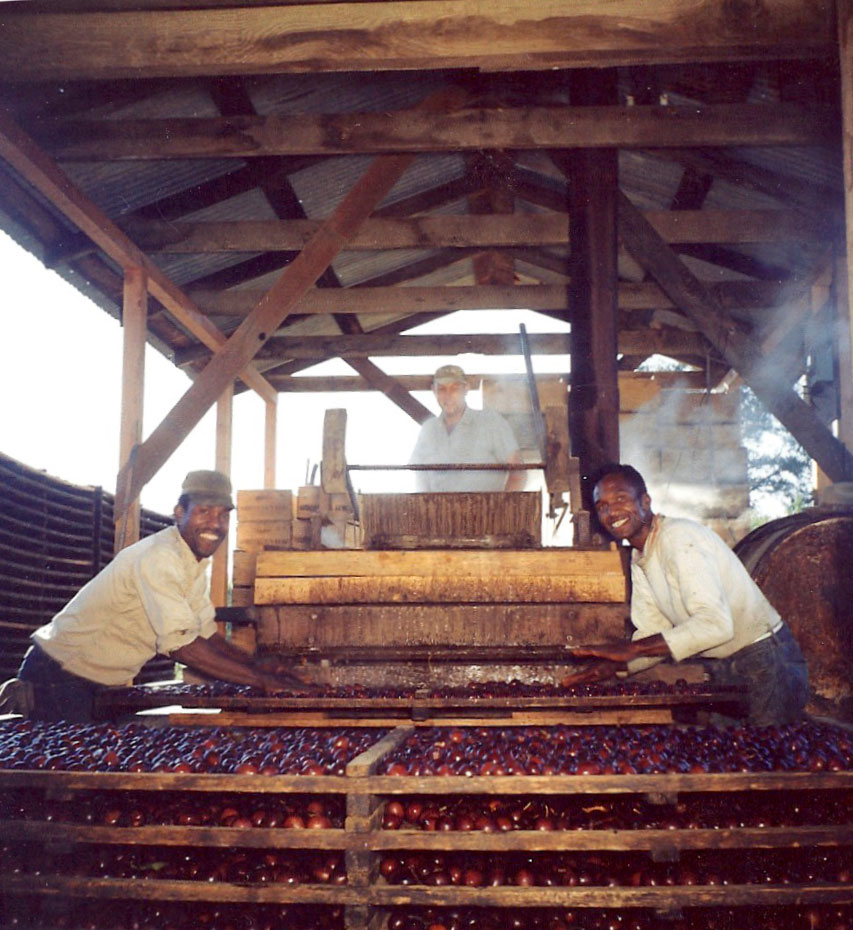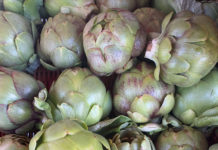
Old-timers in Healdsburg remember that, come harvest time, it wasn’t the smell of fermentation from winegrapes that wafted over town, with its promise of a better vintage, but another smell: that of sun-drying prunes.
“You could smell it everywhere—and you either loved it or you hated it,” said a neighbor at a yard sale not long ago. He compared it to other seasonal agricultural smells, which one either loves or hates depending on how one makes a living.
“It’s certainly our favorite of the agricultural smells,” Kelly Meza said with a laugh. She was with a six-person entourage from the California Prune Board, who visited Healdsburg on Saturday, June 15—National Prune Day—to celebrate the holiday with the local baseball team, the Prune Packers.

That the California Prunes crew was in Healdsburg to recognize the day was no accident. The newly-formed Pacific Empire League, six teams of college-age baseball players, is a fertile ground for the cultivation of professional athletes, hoping at least for a tryout with a major league team if not a place on the roster.
At least so far, the Healdsburg Prune Packers are dominating the league. They are undefeated on the season, 16-0 as we go to press. Under 11-year coach Joey Gomes, the team won three straight league championships with the older, more established California Collegiate League.
It proved successful enough for Healdsburg to spawn its own confederation of Northern California teams, to create what the new league’s president, Natalie Norman, likes to call “a powerhouse summer collegiate league.”
The Prune people know it’s smart to back a winner.
Plum by Another Name?
The prunes we value today are the product of the European Petit d’Agen plum, grafted to an American plum rootstock, said Donn Zea, executive director of California Prunes. But even he had a hard time talking about prunes when the Packers were on the field. It was the third inning, a scoreless tie with the Menlo Legacy.
“National Prune Day is celebrated on June 15 every year,” a voice boomed out over the wooden bleachers at Rec Park. Dick Bugarske, a former high school teacher (and president of the baseball club) who announces the games at Rec Park, extolled the fruit from his grandstand press box.
“On this day, the many health benefits of these dried plums are highlighted,” he continued. “Prunes are incredibly rich in fiber, vitamin A and cancer-fighting antioxidants. What’s more, they’re also good for your vision and digestion.” Keeping things moving is a plus both in digestion and baseball.
Though Bugarske said he had read of a local team called the Prune Packers years earlier, it wasn’t until 1921 that the name was officially applied to Healdsburg’s team, endorsed by the chamber of commerce of the time. These were young men who played ball after their day’s work in the orchards and drying barns was done.
According to a 1917 story in the Healdsburg Tribune, “several thousand cartons of Sunsweet prunes” were packaged as holiday gifts, each including three pounds of specially picked and packed prunes, “an artistic recipe book” on how to cook and serve them and “a little art card of holiday greetings” furnished by the local chamber of commerce.
Even then, the prune lobby played hardball.

Outstanding in Their Fields
The current California Prune Board, created in 1952, currently represents more than 600 prune producers statewide doing research, trade management, policy and promotion. That explained its presence at Art McCaffrey Field on June 15. Representatives came with small bags of free prunes to be handed out at all games this season, each containing about four of the juicy, sweet, dried fruit.
Today California accounts for 40% of the world’s supply of prunes. The Sacramento Valley is now the leading area for prune production, but in the 1930s Santa Clara County claimed the title “Prune Capital of the World.”
Healdsburg’s own title, “Buckle of the Prune Belt,” can only be seen as tongue-in-cheek, but historic photos from the Healdsburg Museum show the pride that local farmers and their families took in the name. The valleys of the time were filled with the fragrant white blossoms of plum trees where vineyards now stand.
Deep Roots
“My family moved out here in the 1900s,” said Dustin Valette, chef and owner of the Valette and The Matheson restaurants, boasting of his local roots. “It used to be hops back in the day. Then it was prunes and now wine.” He said his uncle, David Fanucchi, grows grapes now, but didn’t always. “He had a big prune orchard, and then they converted that into grapes.”
Fanucchi Ranch in Alexander Valley now produces a vineyard-designate sangiovese for Foley Wines and an old-vine zinfandel for Hartford Wines, among others. But when it specialized in prunes, it sat in the heart of a prune-growing region of the valley.
Though their dominance has long since faded, prunes still have their place in the seasonal menu of Healdsburg’s better restaurants. “I’m born and raised here. This is my neck of the woods,” said chef Valette. “I grew up in the transition from prunes to vineyards, and we use fresh plums, fresh prunes all the time, as much as we can.”
Valette is speculating about the recipes he can cook up when they become available. “Probably pretty soon,” he said. “I would say the next couple weeks, honestly.”
Keep an eye on the Farmers’ Markets, where the local plums begin to appear first. The prunes can’t be far behind.








